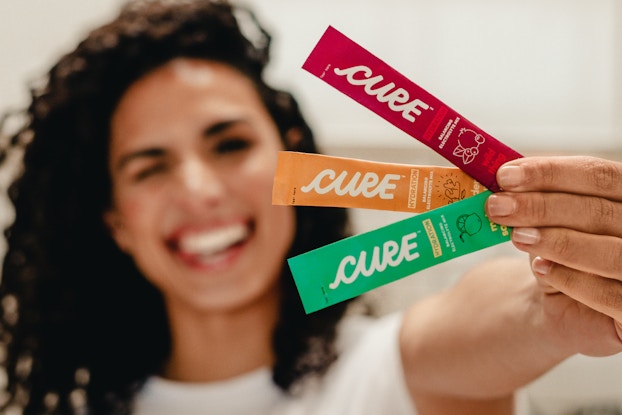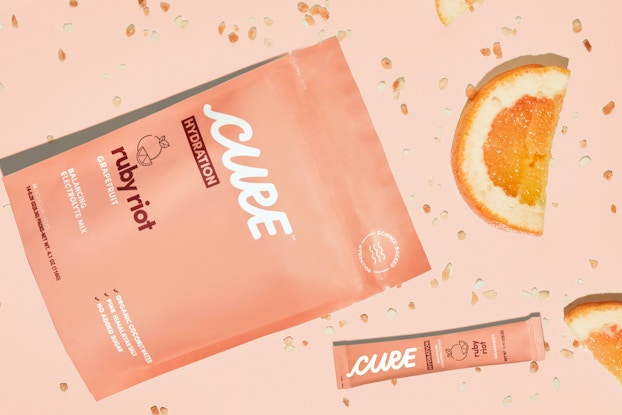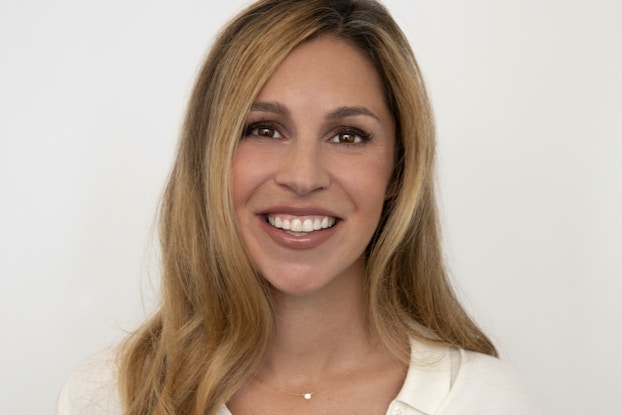
Key takeaways:
- Cure Hydration is carving a new niche in the functional beverage market with organic, plant-based ingredients.
- Amid the pandemic, the brand shifted its distribution strategy from fitness studios and airports to national retail chains.
- The startup’s sales have increased tenfold since 2019, landing in retailers from Walmart to Whole Foods.
Cure Hydration founder and CEO Lauren Picasso isn’t setting out to reinvent the wheel. According to Picasso, the formula for her powdered electrolyte beverages is based on an oral rehydration solution developed by the World Health Organization that has been in use for over 50 years.
Primarily deployed in developing countries suffering from chronic dehydration or diseases like cholera, the solution is meant to hydrate as effectively as an IV drip. All that was missing was the marketing and presentation of a contemporary, millennial-focused wellness brand.

Interested in a small business membership?
Find out how the U.S. Chamber of Commerce can help your company grow and thrive in today's rapidly-evolving business environment. Connect with our team to learn how a small business membership can benefit your bottom line and help you achieve your goals.
“We’ve taken that same formula and updated it with organic and plant-based ingredients,” Picasso told CO—.
To capture the interest of today’s wellness consumer, Cure’s vegan, non-GMO and organic-certified formula uses a base of coconut water, combined with pink Himalayan salt and dehydrated natural ingredients instead of added sugar or synthetic minerals.
Picasso’s inspiration was born out of her own experience training for a triathlon. She was disappointed with the added sugars and synthetic flavors in electrolyte beverages already available on the market and found that the age-old adage of “eight glasses of water per day” is not enough to hydrate even the amateur athlete.
“I discovered a statistic that [a majority] of Americans are actually chronically dehydrated,” she noted, despite the size of the energy and sports drink category. “I really saw an opportunity to disrupt the market, considering the average sports drink has 36 grams of added sugar.”

Cure Hydration’s journey from fitness studios to CVS shelves
Overall, the $93.68 billion functional beverage category, which connotes drinks with a purported health perk via their formulations, like added plant milks, or supposed performance enhancement benefits, such as an energy boost, have gained consumer appeal amid COVID-19, as have health and fitness categories overall. Cure Hydration in particular has seen a boost: According to Picasso, the brand’s sales have increased 10 times compared to 2019.
“We saw a lot of growth in the category and increased retail interest due to the pandemic,” said Picasso. “A lot of retailers were selling out of electrolyte products, and people were stocking up and trying to live healthier lives.”
Following its launch, Cure Hydration’s distribution strategy was focused on meeting the wellness consumer where they are: in boutique gyms and fitness studios, and in airports, hydrating JetBlue’s passengers, for example.
Then, of course, came the pandemic. Over the past year, the brand has had to quickly shift its focus to mass and grocery retailers, with the long-term goal of building up its own direct e-commerce channel. Right now, Picasso told CO—, the distribution spread is about 60% wholesale and 40% e-commerce.
The brand’s increased wholesale brick-and-mortar distribution, which now includes Walmart, CVS and Whole Foods, also ultimately benefits Cure Hydration’s own direct retail channel.
“The more distribution you have, obviously, the more eyeballs you have on your brand,” Picasso said. “We see retail as a way to acquire customers and allow customers to discover the brand, and then DTC as a way to convert them into loyal customers. It’s important for us to have a direct relationship with our customers and build a relationship over time.”
In fact, the brand reports that 60% of its DTC customers are subscribers who pay a recurring fee to receive the product on a monthly basis.
We saw a lot of growth in the category and increased retail interest due to the pandemic. A lot of retailers were selling out of electrolyte products, and people were stocking up and trying to live healthier lives.Lauren Picasso, CEO, Cure Hydration
Brand building in an ultra-competitive era
As the wellness industry and, more specifically, the demand for powdered health beverages grows, the category is attracting more interest from mass-market retailers and outside investors that might have previously skipped it over.
“Launching a beverage takes a lot of capital,” said Picasso. “The pandemic has really helped me become more laser focused on our financing.”
When Cure Hydration confirmed its first big retailer, CVS, in March of last year, the orders were too big for the independent, bootstrapped company to fill on its own. Rather than look to venture capital, Picasso looked for cash in a way that would be more self-sustaining.
“It was at a time where venture capital firms were really not looking at new investments and kind of freaked out about what was happening in the market,” Picasso said.
Instead, she ended up getting debt financing, which helped secure inventory and complete the brand’s launch into a lengthening list of retailers. On that growth, Picasso felt confident going out to raise an equity round of funding.
“By the time I had raised the round of financing that I closed recently, we were actually already profitable. That was really appealing to a lot of VCs, especially in the climate that we're in now. We were not burning a lot of cash.”

Building a more affordable wellness industry
Picasso is just one of many entrepreneurs fighting for a slice of the $4.5 trillion wellness economy. One way she has differentiated the business from similarly positioned products is by building accessibility into the brand’s DNA from the beginning.
“Our goal is really to make wellness more inclusive and accessible to a much broader audience than has historically been targeted by the wellness industry,” Picasso said.
She chose the powder format in part because of its affordability: without the water and plastic bottle added, it’s much cheaper (and more sustainable) to package and ship around the world. It also has a longer shelf life, extending the brand’s inventory flexibility. Currently, the product runs just $1.50 per packet, with discounts on subscriptions that can bring the price per serving down to just a dollar.
As more consumers become more interested in health-conscious products and sustainability, the industry in turn is slowly becoming more inclusive and democratic. Picasso believes that for the post-pandemic consumer, wellness will be table stakes when it comes to the consumer packaged goods (CPG) companies they support.
“Consumers are going to demand that CPG companies are using better quality ingredients, that they expect products to be effective,” she said. “And by nature of that, wellness will become much more accessible over time.”
CO— aims to bring you inspiration from leading respected experts. However, before making any business decision, you should consult a professional who can advise you based on your individual situation.
Follow us on Instagram for more expert tips & business owners stories.







